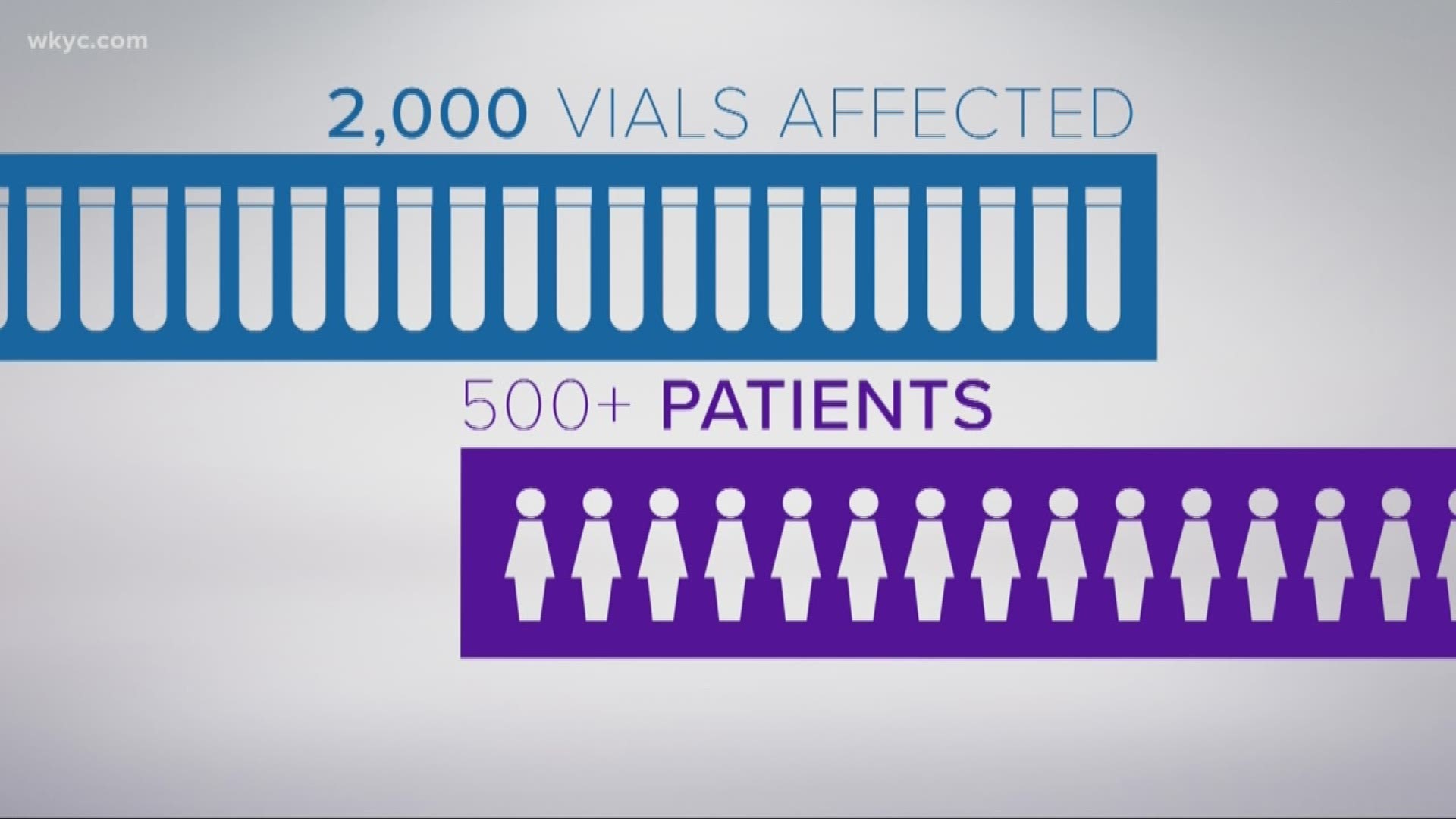CLEVELAND -- University Hospitals Fertility Center is responsible for the births of thousands of babies. The technology helps to create families that previously had little hope.
But last weekend a tragic disaster happened.
“It's devastating, it's absolutely devastating,” said Patti DePompei, President of University Hospital MacDonald Women’s Hospital and Rainbow Babies and Children’s Hospital.
Between the overnight hours of Saturday, March 3 and Sunday, March 4, one of the egg and embryo liquid nitrogen storage tanks began warming up.
“We don't know the reasons why yet, but we do know that the temperature that was measured at a portion of the tank was higher than our acceptable limits,” DePompei said.
The temperature increase may have impacted more than 2,000 vials of eggs and embryos, affecting more than 500 patients.
The tanks have multiple monitors and sensors that should set off alarms if there’s a temperature flux. They can even be remotely monitored. The hospital doesn't know yet if there was a mechanical failure or human error.
“We are still in the process of looking at what actually happened to the monitoring and temperature sensors. We've actually engaged an outside expert to analyze and drill down to see what actually happened,” said Dr. James Liu, Chair of Obstetrics and Gynecology at UH MacDonald Women’s Hospital.
“There was a gradient between the top of the cryo tank and the bottom and the bottom stayed at the proper levels so we are currently looking at what specimens existed in that gradient, but obviously our concern is that there is potentially compromised embryos and our fear is a significant number of embryos and eggs have been compromised,” Dr. Liu said.
The specimens were not in a dated order. They were mixed. Each vial contained two or three eggs or embryos from each patient. That means one patient could have several vials in her name. UH over-nighted letters to all patients impacted. Those letters should have been received Thursday.
“Some of the eggs and embryos that were stored date back decades and people move, their addresses change but we've made our best attempts to track down everyone that we can,” DePompei said.
There is a call center available to answer questions and set up appointments. The number is 216-286-9740.
The center will be open Monday through Friday 7 a.m. to 8 p.m. and on Saturday 8 a.m to 1 p.m.
“We're working very, very hard to try to support them through what is understandably incredibly challenging situation, and we're working very hard to come up with more definitive answers for specific questions they may have as it relates to their own family,” DePompei said.
Here's what we know:
- None of the eggs and embryos impacted by the partial thaw will be destroyed. All have been moved to another cryo tank at the correct temperature.
- UH reported the incident to federal regulators that monitor fertility clinics known as CLIA, Clinical Laboratory Improvement Amendments. The FDA, Center for Medicaid Services (CMS) and CDC are responsible for CLIA, which regulates lab testing and requires state certification.
- UH moved its Fertility Center into the Ahuja Medical Center in 2011. At that time, all of the equipment and technology was new.
What we don’t know:
- The exact cause of the thaw, whether machine malfunction or human error.
- How many of the eggs and embryos are no longer viable. They must be completely thawed to determine viability, but then cannot be refrozen. Which is why patients need to contact their physician.
- The cost of fixing this disaster. For some patients it could mean procedure fees would be waived for future treatment.
- The average cost of fertility treatment can be around $10,000 so the financial impact is expected to be significant.
“We will work with the patient one on one to understand her needs, understand how we might be able to offer some other avenue for her to achieve fertility, it may not be the exact thing that she had planned but we as physicians will work with the patient one on one and arrive at hopefully a way to help that individual,” Dr. Liu said.
“We are so very sorry, we want to do all that we can to support them and we will stand by to answer questions and address them, understanding that we may not have all of those answers right now,” DePompei said.

